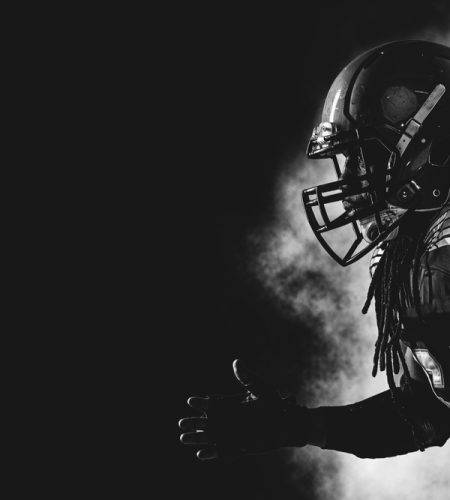Jeffrey Kallister—Owner and Dealer Principal of S&K Buick GMC, 2020 Buick Mark of Excellence honoree, and President of the Buick GMC Local Media Advertising (LMA) for the Champaign/Springfield district—brings the same discipline that powers his award-winning dealership to the football field, where he coaches junior-league athletes on precision passing and teamwork. A Bradley University alumnus with National Auto Dealers Association Academy credentials and a background in high-stakes media production, Jeffrey pairs operational excellence with community service, mentoring young players to master fundamentals and strive for excellence both on and off the gridiron.
The quarterback has a pivotal role on the gridiron. Acting as the offensive squad’s general, the quarterback combines speed and accuracy with the ability to read defenses and find open receivers, or hand off to cutting running backs at just the right time. In addition to identifying weaknesses in the line and backfield, you employ intricate footwork in avoiding members of the defense who are rushing and threatening to take you down.
One essential for accurate throwing is proper hand placement. This starts with spinning the ball so that the laces are on top. Depending on personal preference, you place two to four fingers on the laces, keeping the other fingers behind, nearer the body. With a secure grip, you lift the ball above the shoulder, which allows for quick release. When the ball comes off the hands from a lower position, you are vulnerable to interception, or defenders knocking down the pass mid-flight.
While many footwork variations exist, designed to throw opponents off balance, the most basic involves stepping first with the foot opposite the throwing arm. After locking into your receiver, cock the ball behind the head in rhythm and whip the arm forward. When you reach a 90-degree angle, release the ball. For maximum power, continue with the arm motion all the way through the throwing arc.
There are subtle add-ons to this. For one, the foundational throwing stance involves taking a side angle as you step back, relative to the line of scrimmage. The shoulder of the non-throwing arm faces the line, with the foot facing outward, as if in a martial arts stance.
Traditionally, right-handed QBs roll the left shoulder out toward the ball, with the ball kept close to the upper chest. While loading the front shoulder may offer slightly better protection, it impacts accuracy, as the shoulders must over-rotate on the throw to compensate for this closed stance.
Today’s QBs typically keep a more open and exposed stance. This allows them to “shoot from the hips” and achieve maximum hip rotation, finding receivers across the entire field. The hips actually start to rotate before the shoulder does, similar to a baseball swing. The proper sequence is thus one of the lead foot striding a step toward the target, with the shoulder moving back and cocking the ball. At this point, the hips initiate rotation, saving the shoulders from doing the work and placing the focus on the wrist flick and extension of the arm. With the shoulder not over-closed before the front stride occurs, you guide the ball with the forearm and wrists, maximizing accuracy.
Another technical aspect worth practicing involves avoiding the tendency to lead the ball when receivers are on short slants. Leading involves almost gesturing with the throwing arm prior to the pass and trying to finesse the ball in an arc to where the runner will be. With this approach, the ball tends to die or lose accuracy along the way. Focus rather on hitting the player on his jersey numbers with a quick hip and shoulder rotation. The receiver is watching you as they run and is ready to catch any ball that comes, so long as it’s accurate. Your focus, thus, should simply be on maximizing power behind the throw.

